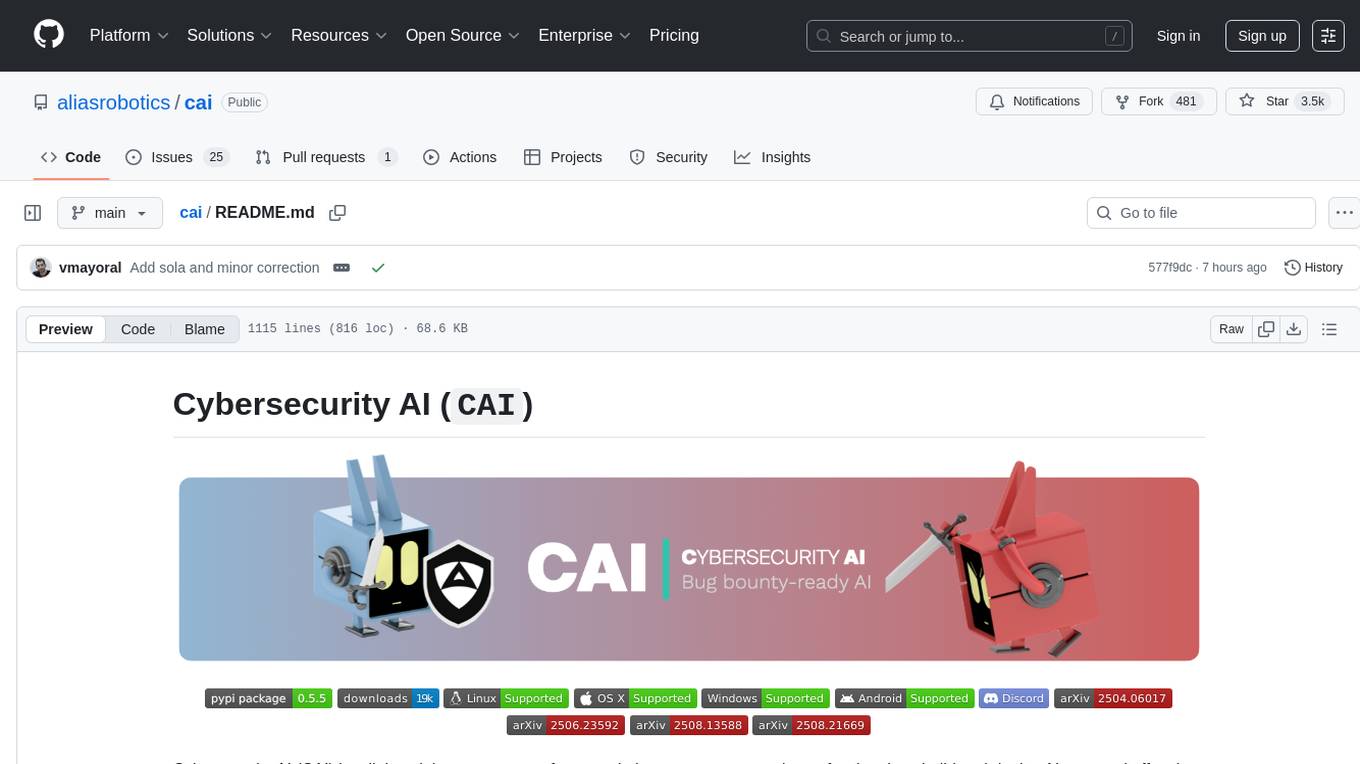
golitex
Litex: The First Formal Language Learnable in 1-2 Hours
Stars: 478
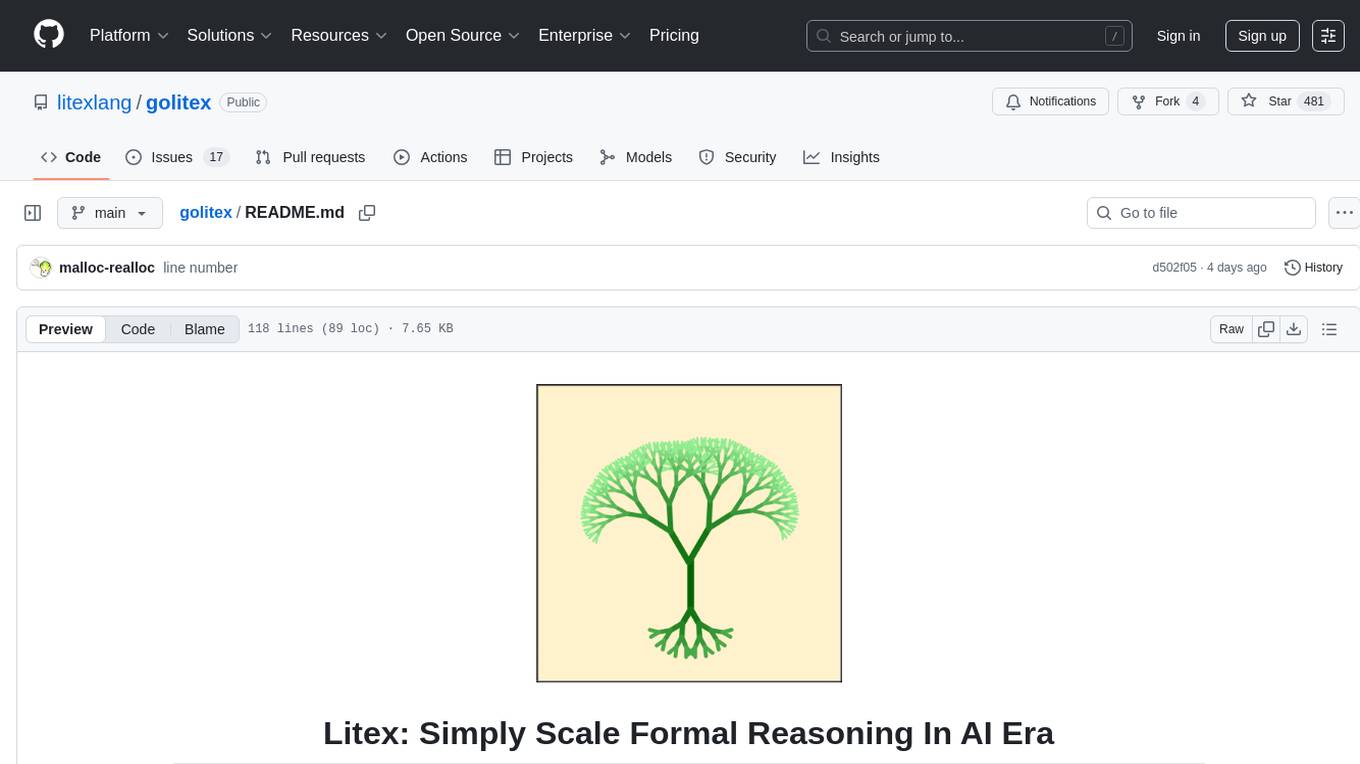
Litex is a simple, intuitive, and open-source formal language for coding reasoning. It ensures correctness in every step of reasoning and can be learned by anyone in 1–2 hours, even without a math or programming background. Litex scales formal reasoning by making it accessible to more people, applicable to complex problems, and usable by large-scale AI systems. It aims to lower the entrance barrier and reduce the cost of constructing formalized proofs, making formal reasoning as natural as writing.
README:
version v0.1.10-beta (not yet ready for production use)
Jiachen Shen and The Litex Team
Simplicity is the ultimate sophistication.
– Leonardo da Vinci
Litex(website) is a simple, intuitive, and open-source formal language for coding reasoning (Star the repo!). It ensures every step of your reasoning is correct, and is actually the first reasoning formal language (or formal language for short) that can be learned by anyone in 1–2 hours, even without math or programming background.
Making Litex intuitive to both humans and AI is Litex's core mission. This is how Litex scales formal reasoning: by making it accessible to more people, applicable to more complex problems, and usable by large-scale AI systems. These benefits stem from Litex's potential to lower the entrance barrier by 10x and reduce the cost of constructing formalized proofs by 10x, making formal reasoning as natural as writing.
Here is a comparison between Litex and traditional formal language Lean.
| Litex | Lean 4 |
|---|---|
let x R, y R: 2 * x + 3 * y = 10 4 * x + 5 * y = 142 * (2 * x + 3 * y) = 2 * 10 = 4 * x + 6 * yy = (4 * x + 6 * y) - (4 * x + 5 * y) = 2 * 10 - 14 = 62 * x + 3 * 6 = 102 * x + 18 - 18 = 10 - 18 = -8x = (2 * x) / 2 = -8 / 2 = -4 |
import Mathlib.Tacticexample (x y : ℝ) (h₁ : 2 * x + 3 * y = 10) (h₂ : 4 * x + 5 * y = 14) : x = -4 ∧ y = 6 := by have h₃ : 2 * (2 * x + 3 * y) = 2 * 10 := by rw [h₁] have h₄ : 4 * x + 6 * y = 20 := by linear_combination 2 * h₁ have h₅ : (4 * x + 6 * y) - (4 * x + 5 * y) = 20 - 14 := by rw [h₄, h₂] have h₆ : (4 * x + 6 * y) - (4 * x + 5 * y) = y := by ring have h₇ : 20 - 14 = 6 := by norm_num have h₈ : y = 6 := by rw [←h₆, h₅, h₇] have h₉ : 2 * x + 3 * 6 = 10 := by rw [h₈, h₁] have h₁₀ : 2 * x + 18 = 10 := by rw [mul_add] at h₉ simp at h₉ exact h₉ have h₁₁ : 2 * x = -8 := by linear_combination h₁₀ - 18 have h₁₂ : x = -4 := by linear_combination h₁₁ / 2 exact ⟨h₁₂, h₈⟩
|
Even Kids can formalize the multivariate equation in Litex in 2 minutes, while it require an experienced expert hours of work in Lean 4. It is a typical example of how Litex lowers the entrance barrier by 10x, lowers the cost of constructing formalized proofs by 10x, making formalization as easy and fast as natural writing. No foreign keywords, no twisted syntax, or complex semantics. Just plain reasoning.
The best way to predict future is to create it.
-- Alan Kay
Litex is nothing without its community and technical ecosystem.
Resources for Litex users:
- Our official website contains tutorials, cheat sheets, examples, documentation, collaboration opportunities, and more for Litex. All documents on our website are open-sourced here
- Learn Litex online. A short list of major Litex statements and their usage are shown in the cheat sheet.
- You can run litex on your own computer, start from here
- Litex standard library is under active development. Contribute to it and earn impact rewards!
- Use pylitex to call Litex in Python
- Our Community is on Zulip!
- Email us here.
Resources for AI researchers who want to develop Litex-based AI systems, mostly developed by the Litex open-source community:
- Litex achieves 100% accuracy on gsm8k dataset without any training Github
- Litex Dataset is on Hugging Face. Contribute to it and earn impact rewards!
- Here is a really powerful Litex Agent Github. It is so powerful that much code in our standard library is generated by it!
- AI researchers interested in Litex might find Litex LLM Dev useful. Contact us if you are interested in collaborating on this project!
All of our repositories are open-sourced. Just issue PRs and tell us any ideas about Litex! Maybe we can build the future together!
Sometimes it is the very people who no one imagines anything of who do the things that no one can imagine.
– Alan Turing
Hi, I’m Jiachen Shen, creator of Litex. It is so fortunate to receive tremendous help from friends and colleagues throughout this journey of designing, implementing, and growing Litex into a community. Without their support, Litex would not have had the chance to succeed.
I owe special thanks to my friend Zhaoxuan Hong, who built Litex’s powerful toolchains and has supported the project from the very beginning. I am also deeply grateful to Siqi Sun, Wei Lin, Peng Sun, Jie Fu, Zeyu Zheng, Huajian Xin, Zijie Qiu, Siqi Guo, Haoyang Shi, Chengyang Zhu, Chenxuan Huang for their invaluable contributions. I am certain this list of special thanks will only grow longer in the future.
For Tasks:
Click tags to check more tools for each tasksFor Jobs:
Alternative AI tools for golitex
Similar Open Source Tools

golitex
Litex is a simple, intuitive, and open-source formal language for coding reasoning. It ensures correctness in every step of reasoning and can be learned by anyone in 1–2 hours, even without a math or programming background. Litex scales formal reasoning by making it accessible to more people, applicable to complex problems, and usable by large-scale AI systems. It aims to lower the entrance barrier and reduce the cost of constructing formalized proofs, making formal reasoning as natural as writing.
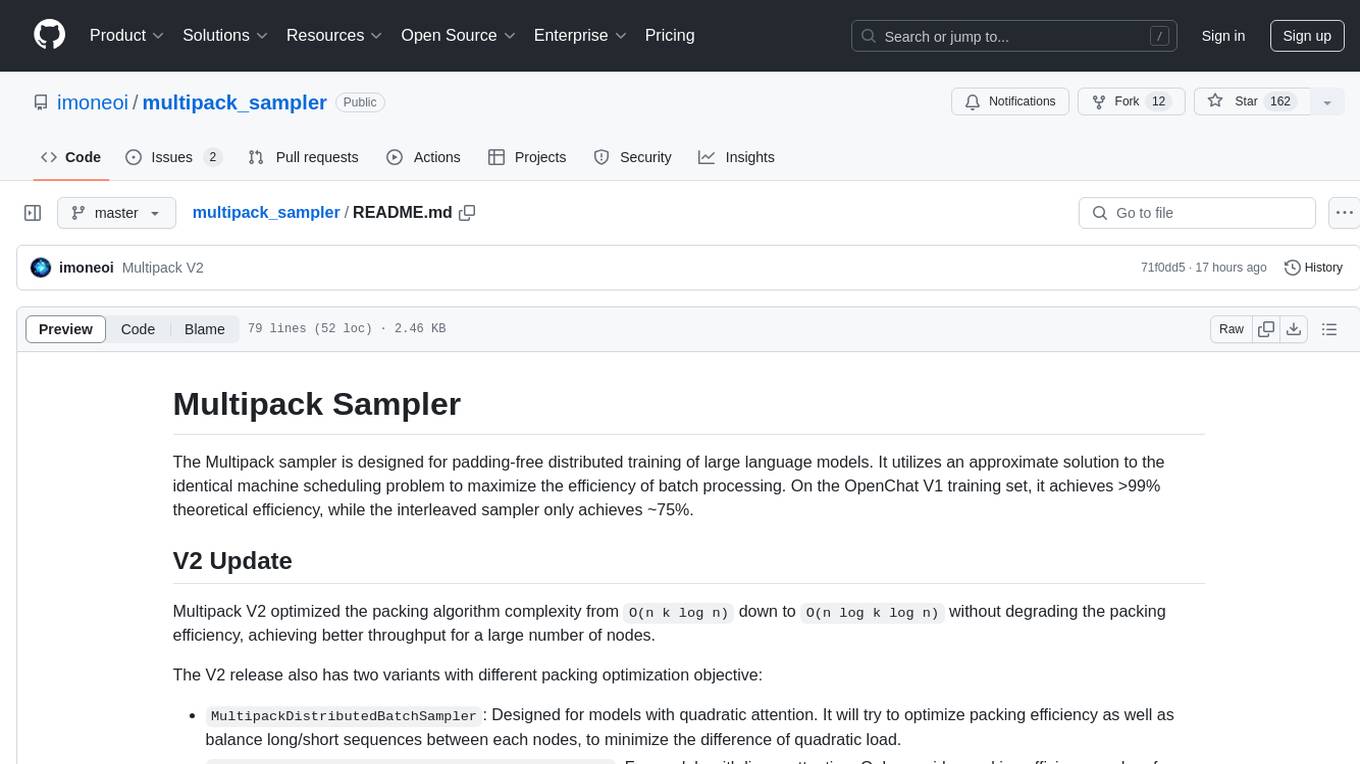
multipack_sampler
The Multipack sampler is a tool designed for padding-free distributed training of large language models. It optimizes batch processing efficiency using an approximate solution to the identical machine scheduling problem. The V2 update further enhances the packing algorithm complexity, achieving better throughput for a large number of nodes. It includes two variants for models with different attention types, aiming to balance sequence lengths and optimize packing efficiency. Users can refer to the provided benchmark for evaluating efficiency, utilization, and L^2 lag. The tool is compatible with PyTorch DataLoader and is released under the MIT license.
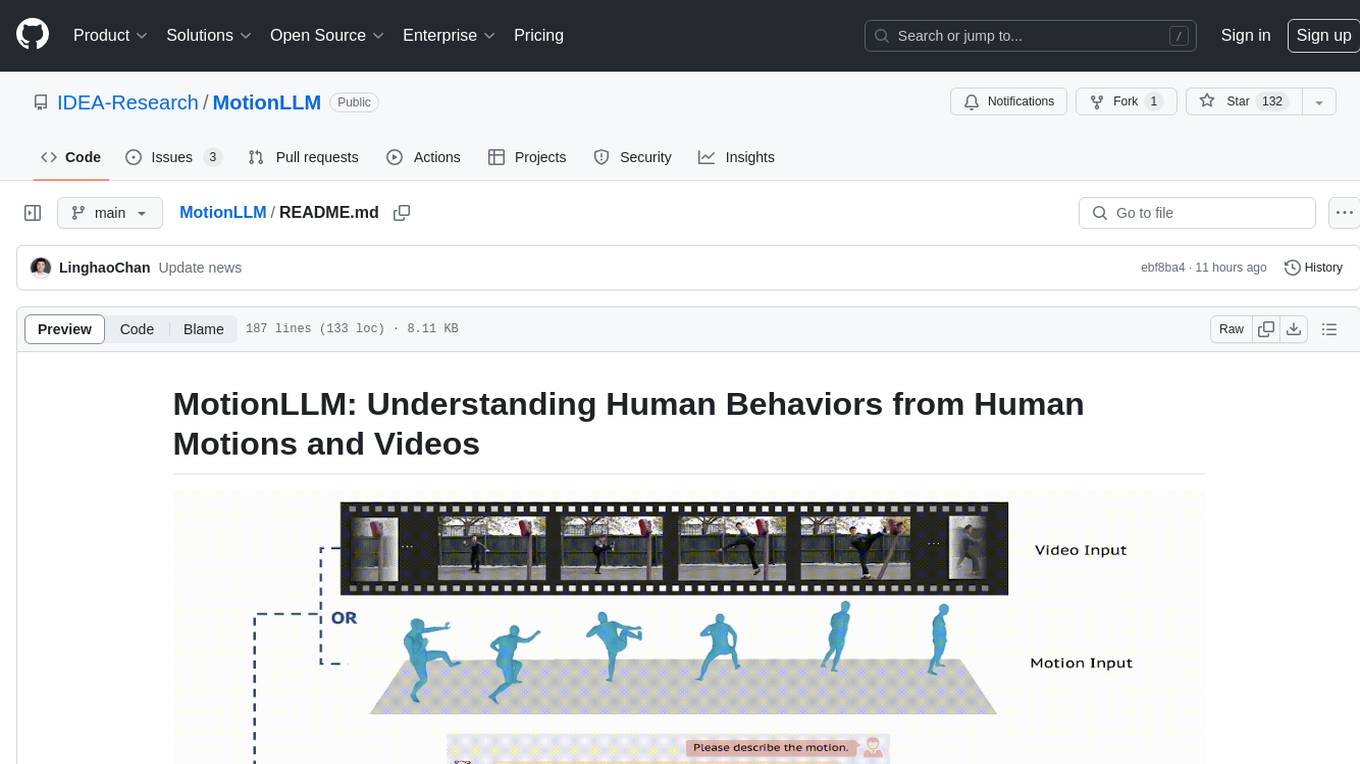
MotionLLM
MotionLLM is a framework for human behavior understanding that leverages Large Language Models (LLMs) to jointly model videos and motion sequences. It provides a unified training strategy, dataset MoVid, and MoVid-Bench for evaluating human behavior comprehension. The framework excels in captioning, spatial-temporal comprehension, and reasoning abilities.
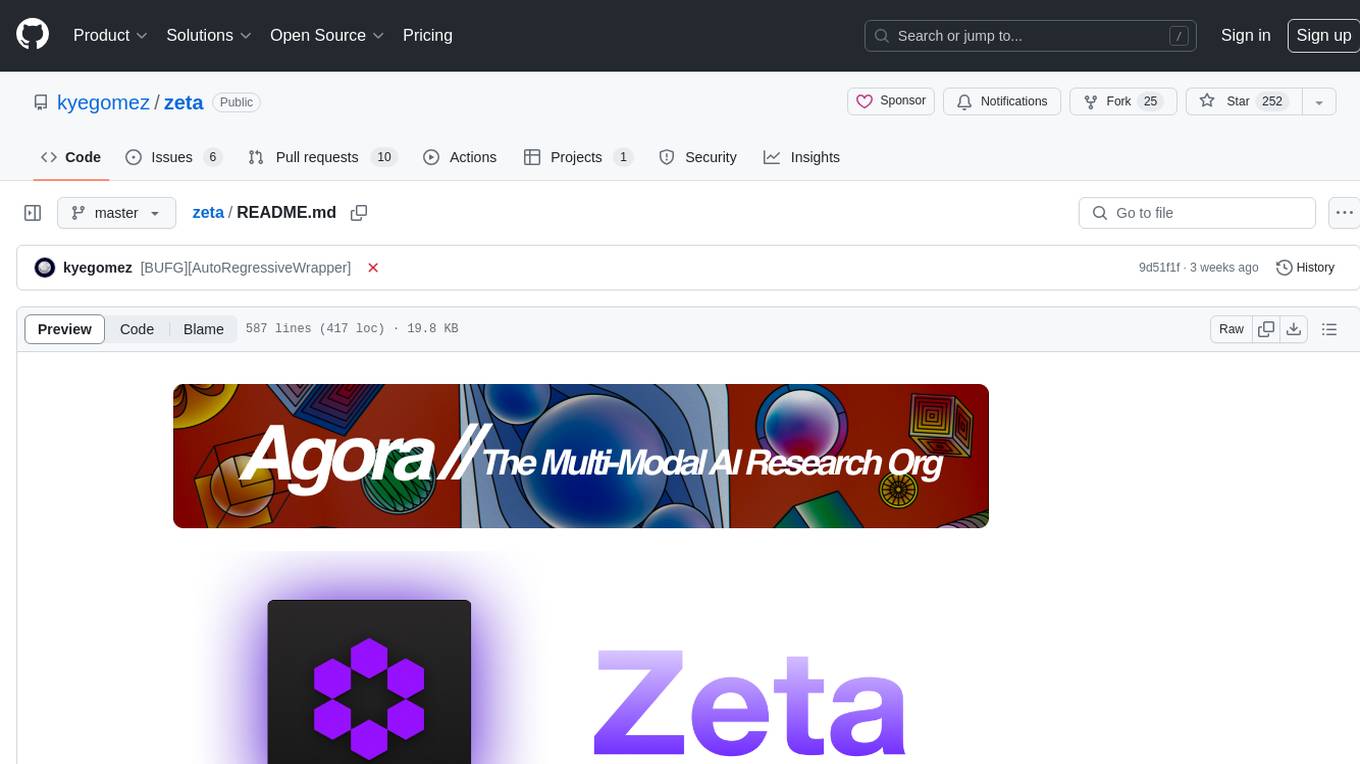
zeta
Zeta is a tool designed to build state-of-the-art AI models faster by providing modular, high-performance, and scalable building blocks. It addresses the common issues faced while working with neural nets, such as chaotic codebases, lack of modularity, and low performance modules. Zeta emphasizes usability, modularity, and performance, and is currently used in hundreds of models across various GitHub repositories. It enables users to prototype, train, optimize, and deploy the latest SOTA neural nets into production. The tool offers various modules like FlashAttention, SwiGLUStacked, RelativePositionBias, FeedForward, BitLinear, PalmE, Unet, VisionEmbeddings, niva, FusedDenseGELUDense, FusedDropoutLayerNorm, MambaBlock, Film, hyper_optimize, DPO, and ZetaCloud for different tasks in AI model development.

rl
TorchRL is an open-source Reinforcement Learning (RL) library for PyTorch. It provides pytorch and **python-first** , low and high level abstractions for RL that are intended to be **efficient** , **modular** , **documented** and properly **tested**. The code is aimed at supporting research in RL. Most of it is written in python in a highly modular way, such that researchers can easily swap components, transform them or write new ones with little effort.
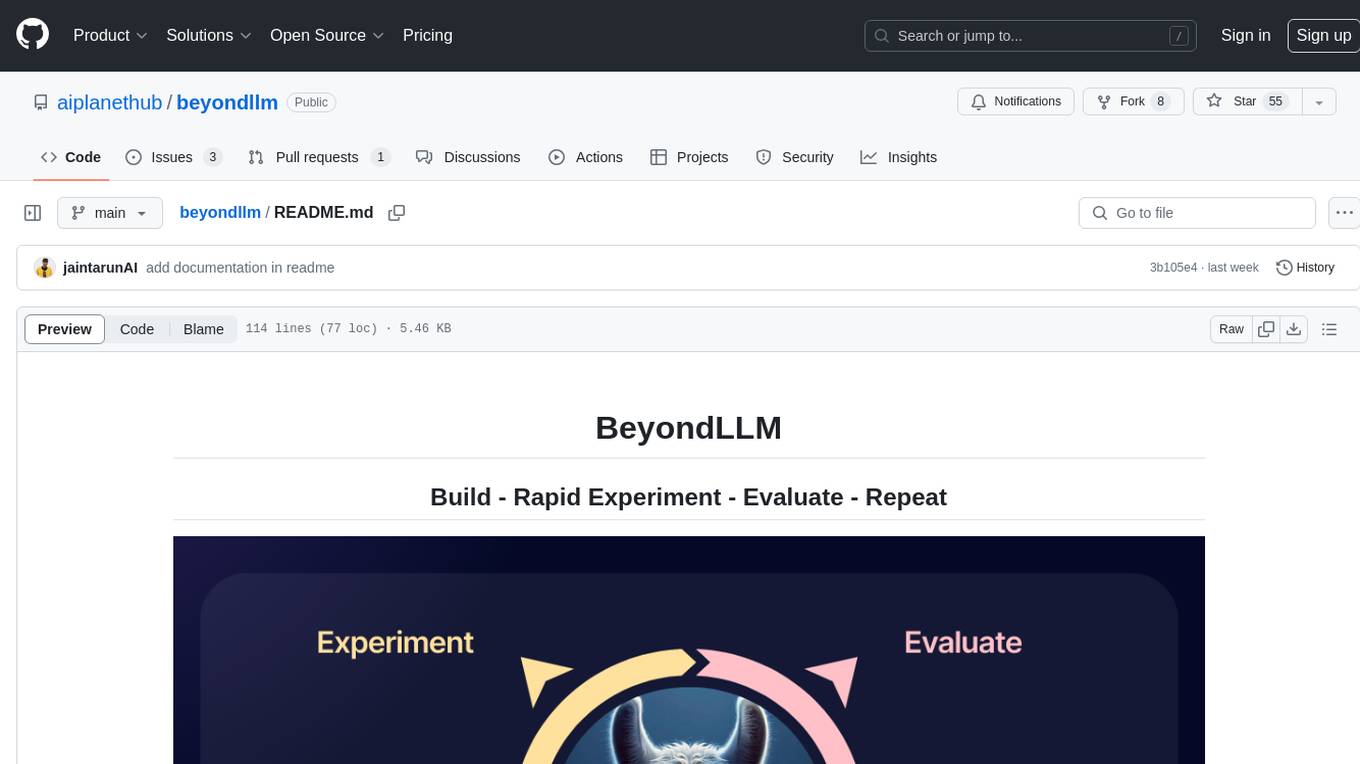
beyondllm
Beyond LLM offers an all-in-one toolkit for experimentation, evaluation, and deployment of Retrieval-Augmented Generation (RAG) systems. It simplifies the process with automated integration, customizable evaluation metrics, and support for various Large Language Models (LLMs) tailored to specific needs. The aim is to reduce LLM hallucination risks and enhance reliability.
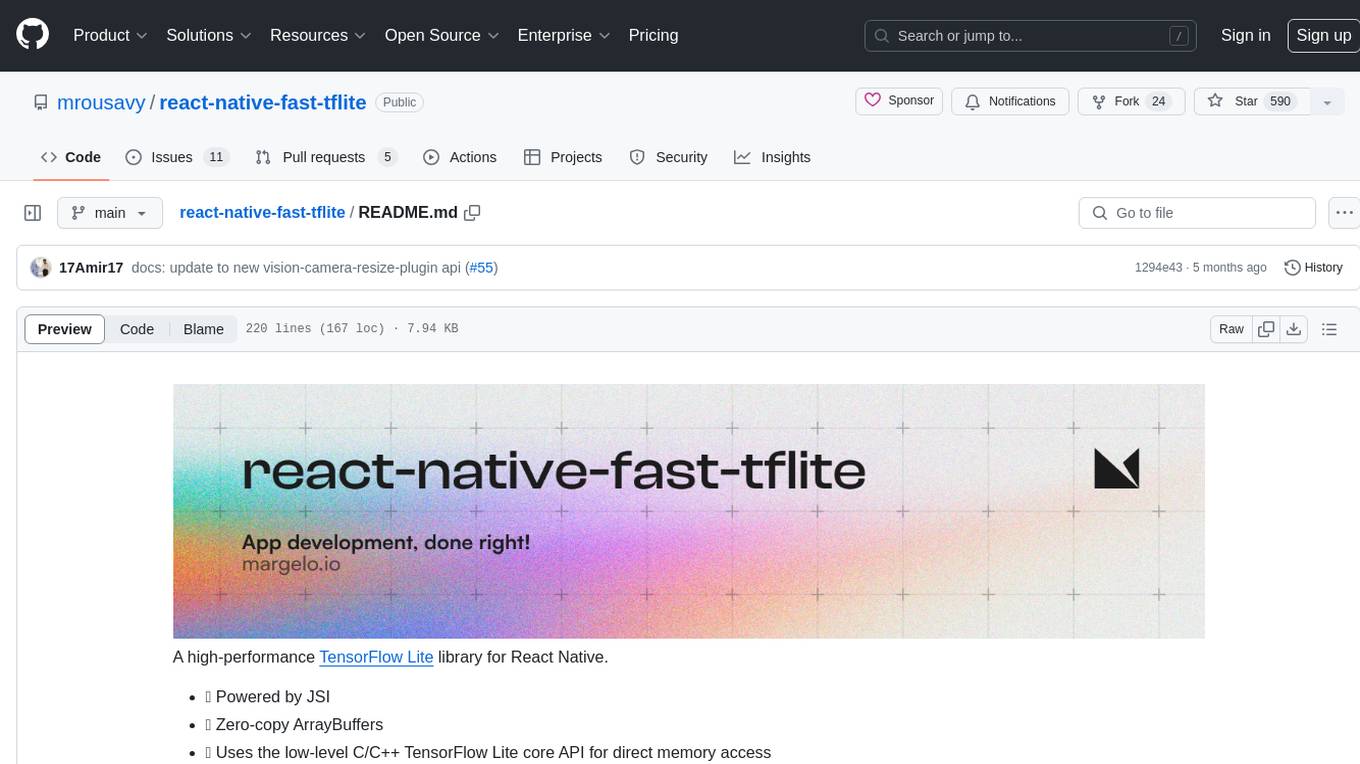
react-native-fast-tflite
A high-performance TensorFlow Lite library for React Native that utilizes JSI for power, zero-copy ArrayBuffers for efficiency, and low-level C/C++ TensorFlow Lite core API for direct memory access. It supports swapping out TensorFlow Models at runtime and GPU-accelerated delegates like CoreML/Metal/OpenGL. Easy VisionCamera integration allows for seamless usage. Users can load TensorFlow Lite models, interpret input and output data, and utilize GPU Delegates for faster computation. The library is suitable for real-time object detection, image classification, and other machine learning tasks in React Native applications.
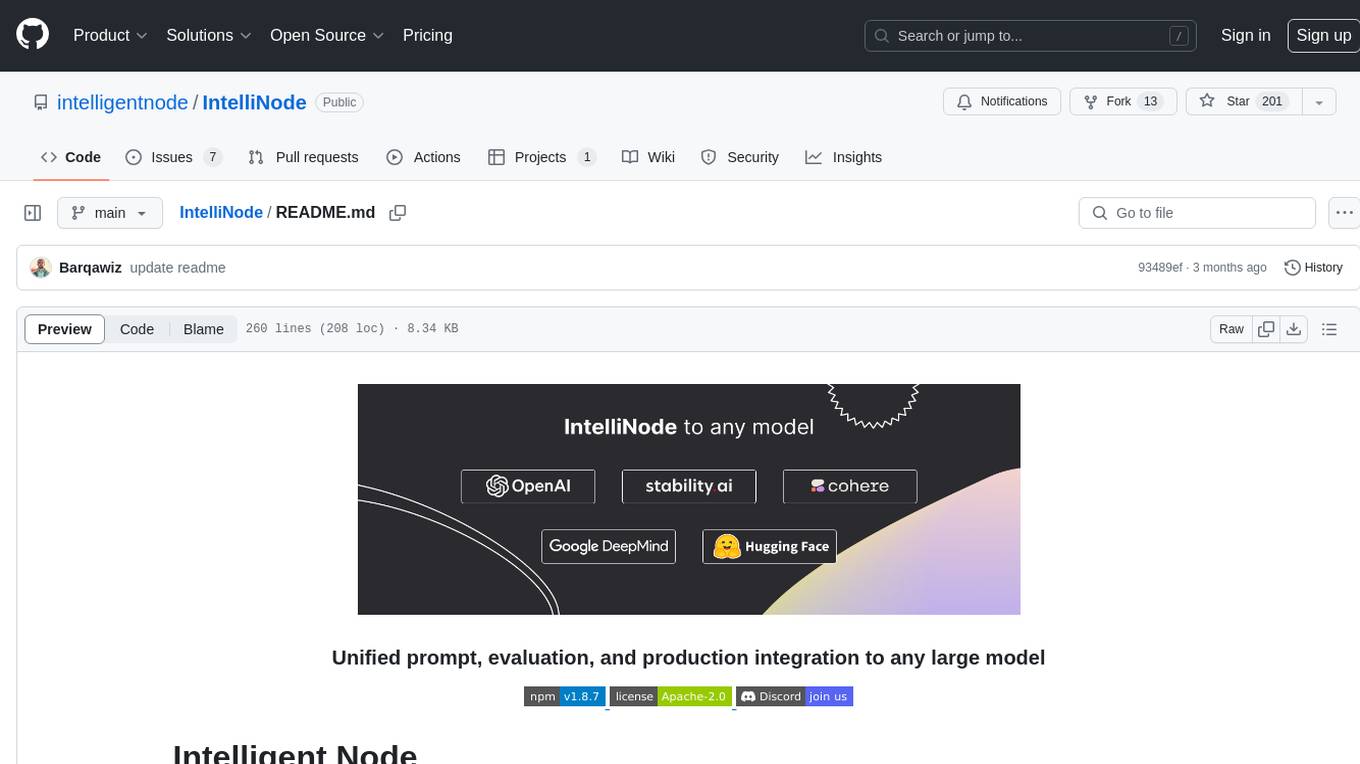
IntelliNode
IntelliNode is a javascript module that integrates cutting-edge AI models like ChatGPT, LLaMA, WaveNet, Gemini, and Stable diffusion into projects. It offers functions for generating text, speech, and images, as well as semantic search, multi-model evaluation, and chatbot capabilities. The module provides a wrapper layer for low-level model access, a controller layer for unified input handling, and a function layer for abstract functionality tailored to various use cases.
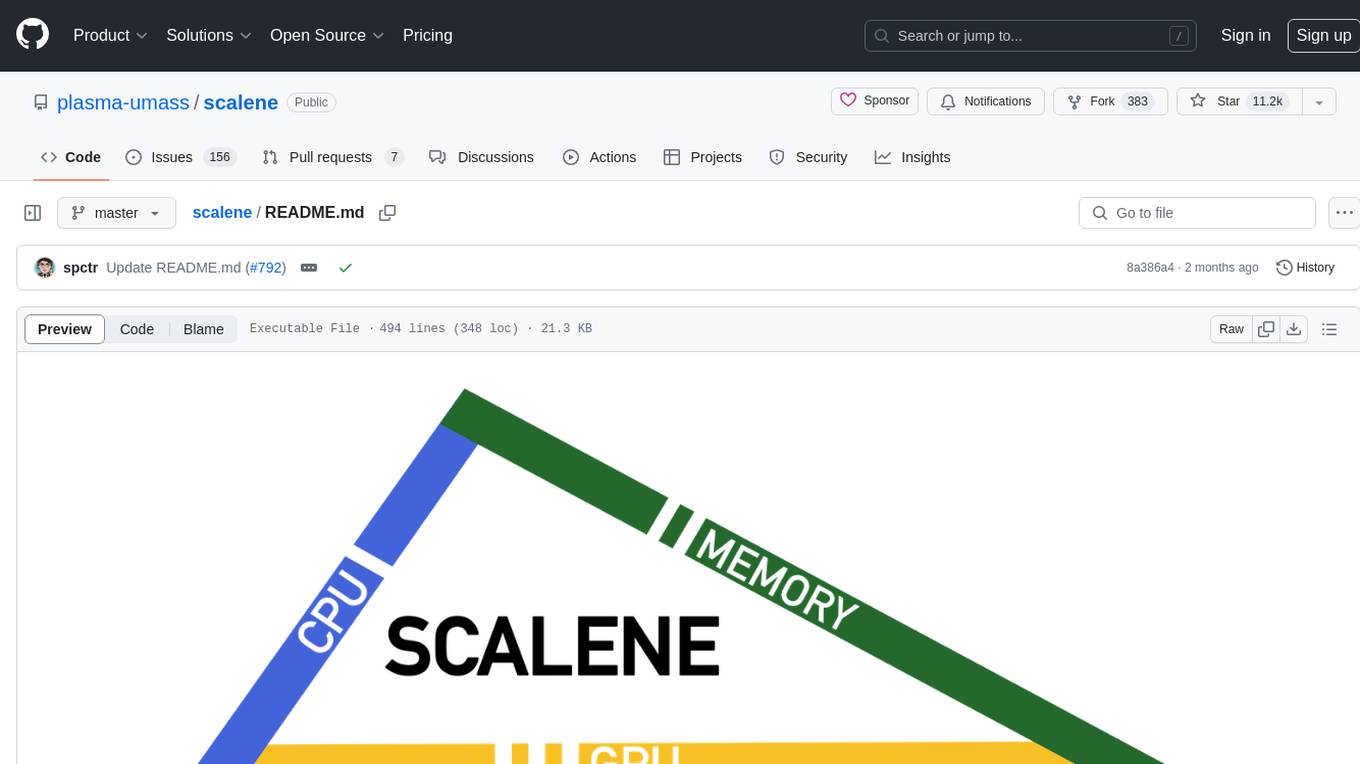
scalene
Scalene is a high-performance CPU, GPU, and memory profiler for Python that provides detailed information and runs faster than many other profilers. It incorporates AI-powered proposed optimizations, allowing users to generate optimization suggestions by clicking on specific lines or regions of code. Scalene separates time spent in Python from native code, highlights hotspots, and identifies memory usage per line. It supports GPU profiling on NVIDIA-based systems and detects memory leaks. Users can generate reduced profiles, profile specific functions using decorators, and suspend/resume profiling for background processes. Scalene is available as a pip or conda package and works on various platforms. It offers features like profiling at the line level, memory trends, copy volume reporting, and leak detection.
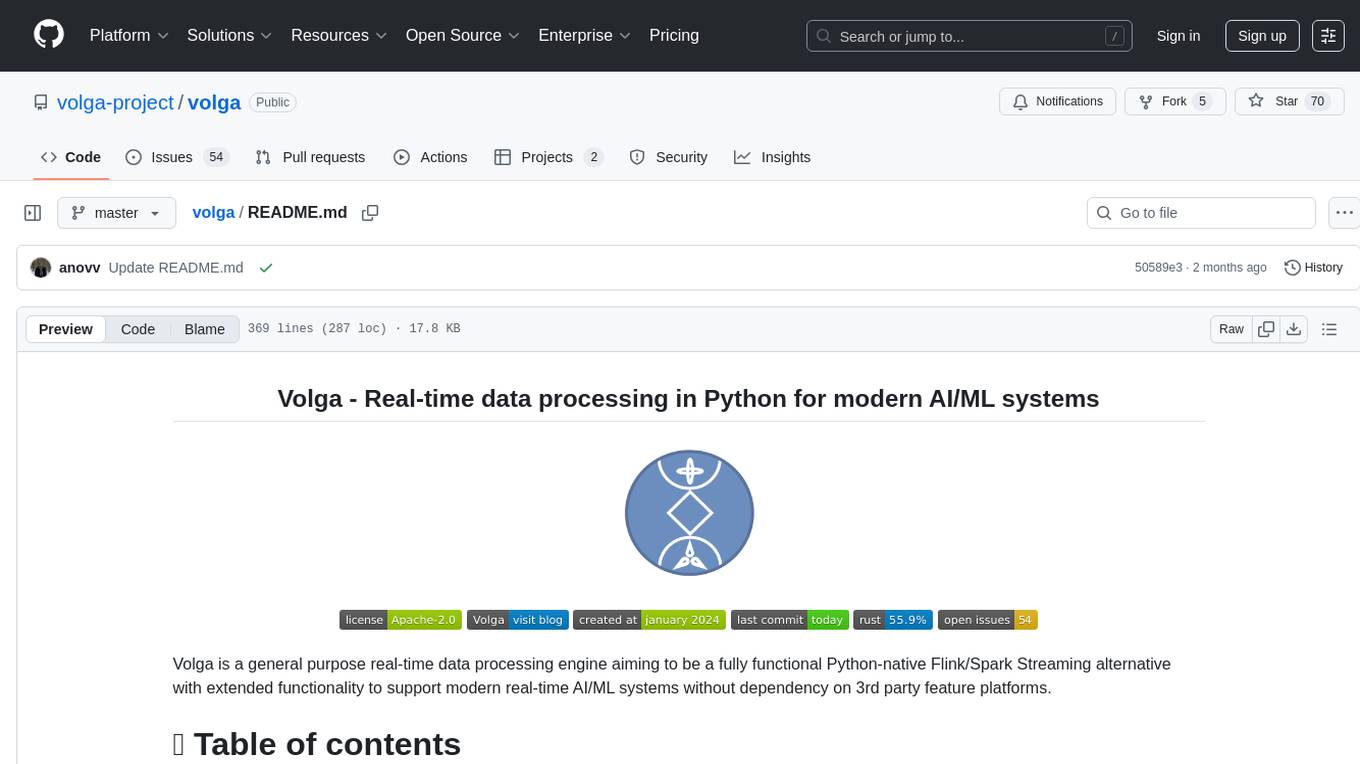
volga
Volga is a general purpose real-time data processing engine in Python for modern AI/ML systems. It aims to be a Python-native alternative to Flink/Spark Streaming with extended functionality for real-time AI/ML workloads. It provides a hybrid push+pull architecture, Entity API for defining data entities and feature pipelines, DataStream API for general data processing, and customizable data connectors. Volga can run on a laptop or a distributed cluster, making it suitable for building custom real-time AI/ML feature platforms or general data pipelines without relying on third-party platforms.
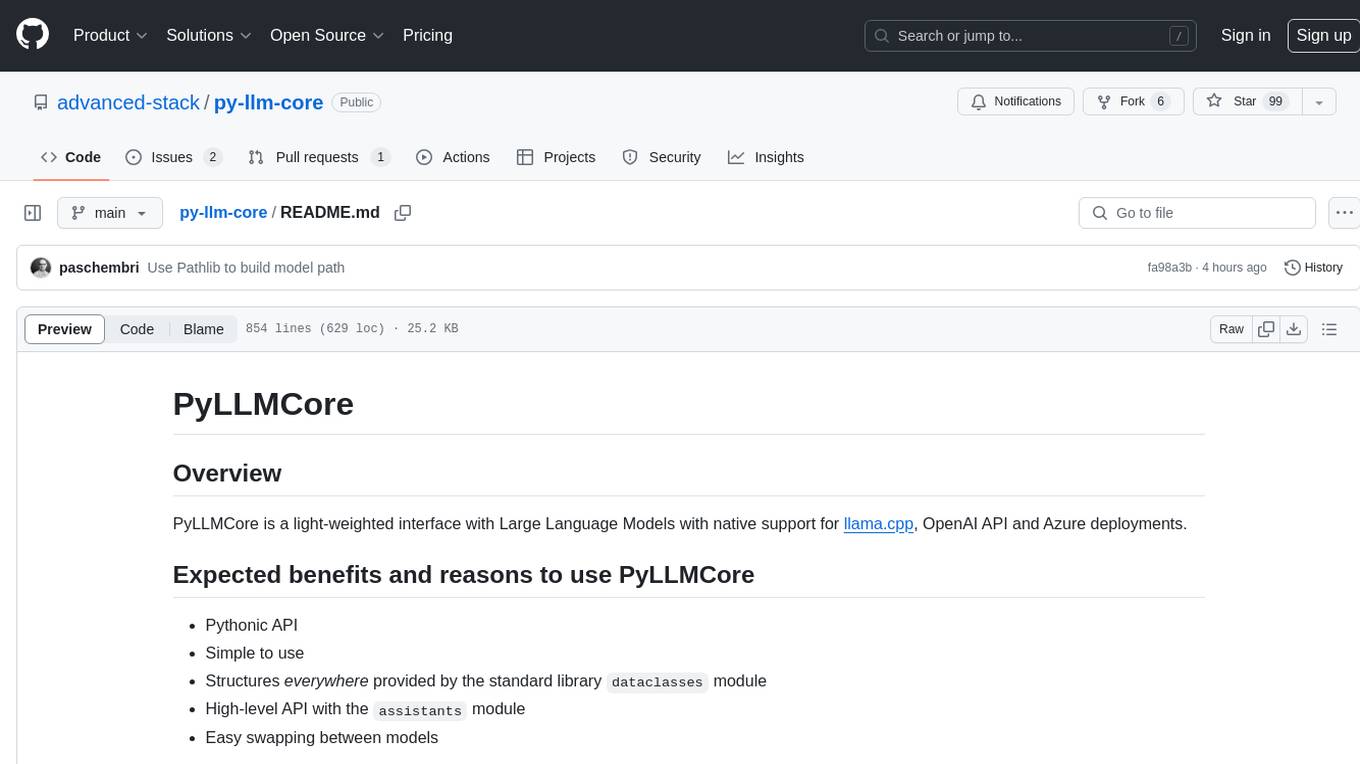
py-llm-core
PyLLMCore is a light-weighted interface with Large Language Models with native support for llama.cpp, OpenAI API, and Azure deployments. It offers a Pythonic API that is simple to use, with structures provided by the standard library dataclasses module. The high-level API includes the assistants module for easy swapping between models. PyLLMCore supports various models including those compatible with llama.cpp, OpenAI, and Azure APIs. It covers use cases such as parsing, summarizing, question answering, hallucinations reduction, context size management, and tokenizing. The tool allows users to interact with language models for tasks like parsing text, summarizing content, answering questions, reducing hallucinations, managing context size, and tokenizing text.
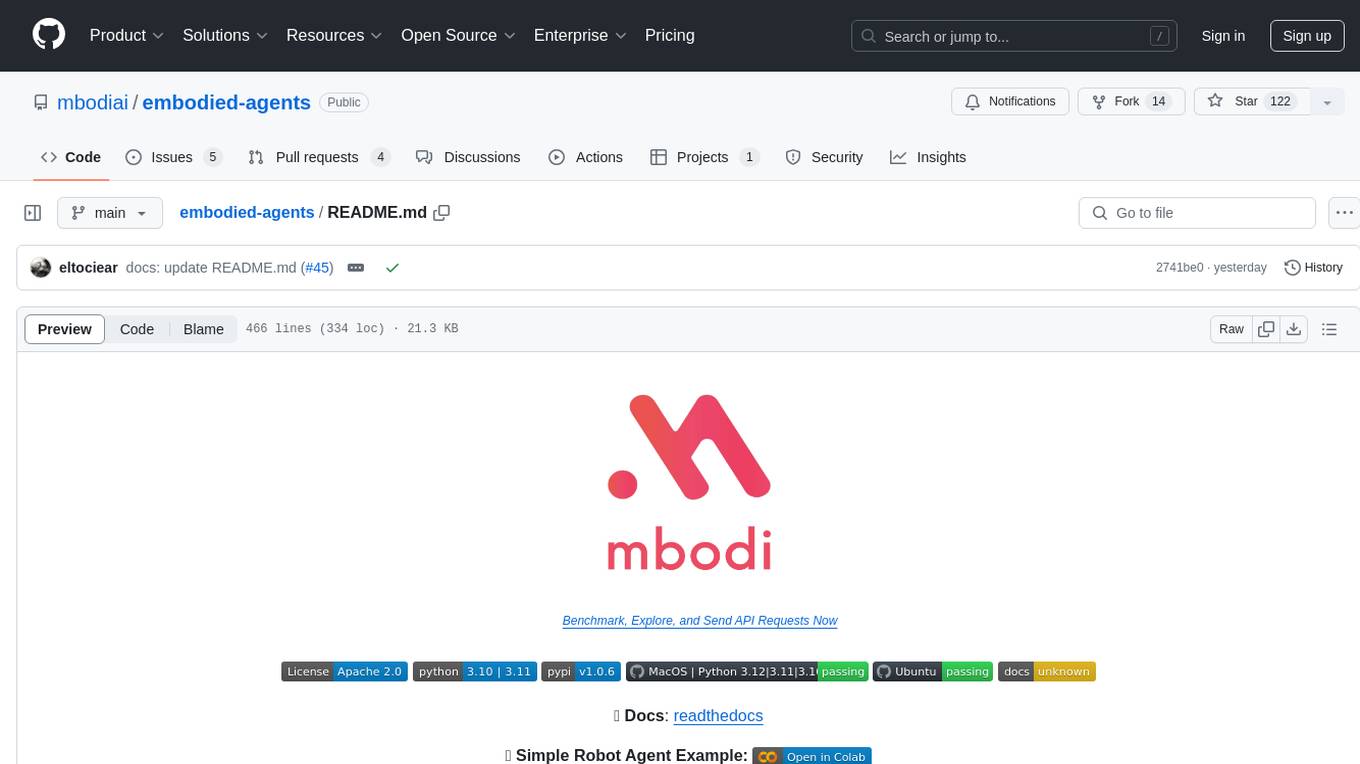
embodied-agents
Embodied Agents is a toolkit for integrating large multi-modal models into existing robot stacks with just a few lines of code. It provides consistency, reliability, scalability, and is configurable to any observation and action space. The toolkit is designed to reduce complexities involved in setting up inference endpoints, converting between different model formats, and collecting/storing datasets. It aims to facilitate data collection and sharing among roboticists by providing Python-first abstractions that are modular, extensible, and applicable to a wide range of tasks. The toolkit supports asynchronous and remote thread-safe agent execution for maximal responsiveness and scalability, and is compatible with various APIs like HuggingFace Spaces, Datasets, Gymnasium Spaces, Ollama, and OpenAI. It also offers automatic dataset recording and optional uploads to the HuggingFace hub.
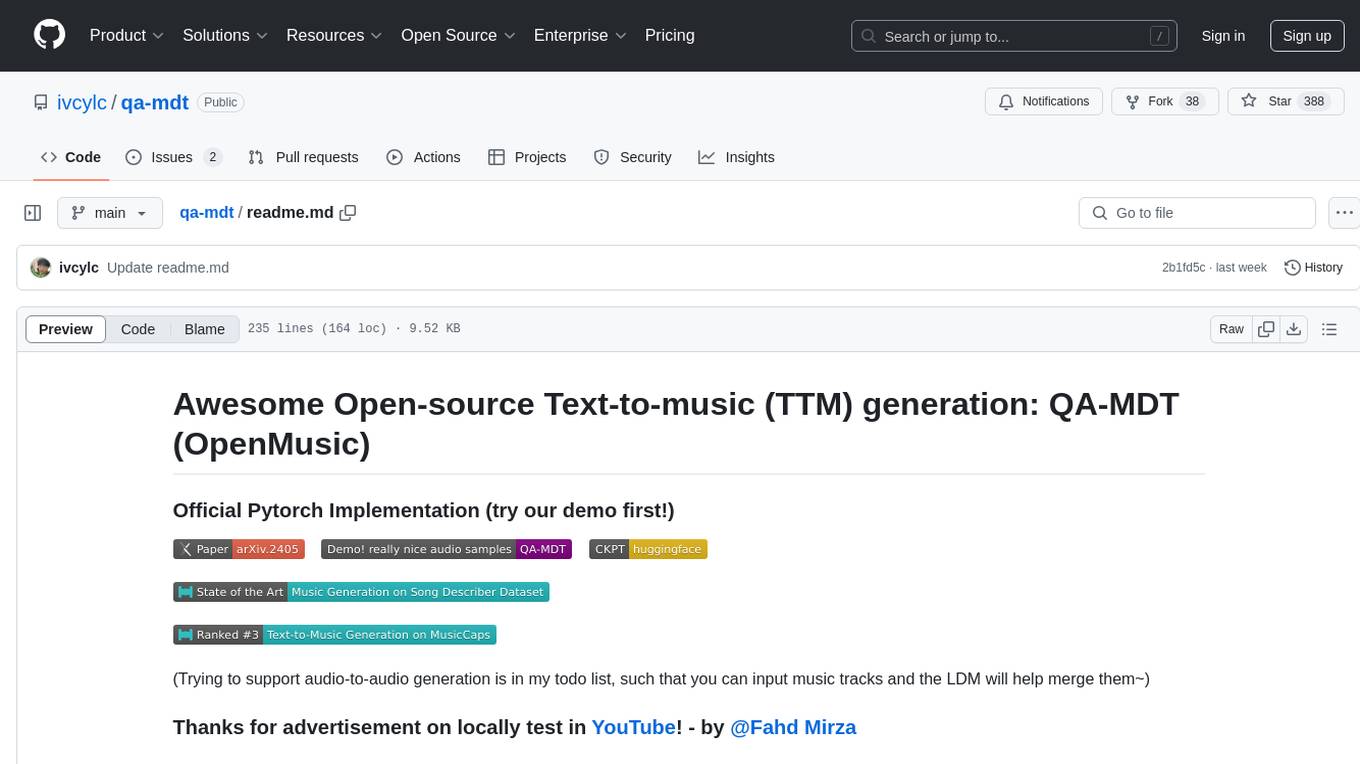
qa-mdt
This repository provides an implementation of QA-MDT, integrating state-of-the-art models for music generation. It offers a Quality-Aware Masked Diffusion Transformer for enhanced music generation. The code is based on various repositories like AudioLDM, PixArt-alpha, MDT, AudioMAE, and Open-Sora. The implementation allows for training and fine-tuning the model with different strategies and datasets. The repository also includes instructions for preparing datasets in LMDB format and provides a script for creating a toy LMDB dataset. The model can be used for music generation tasks, with a focus on quality injection to enhance the musicality of generated music.
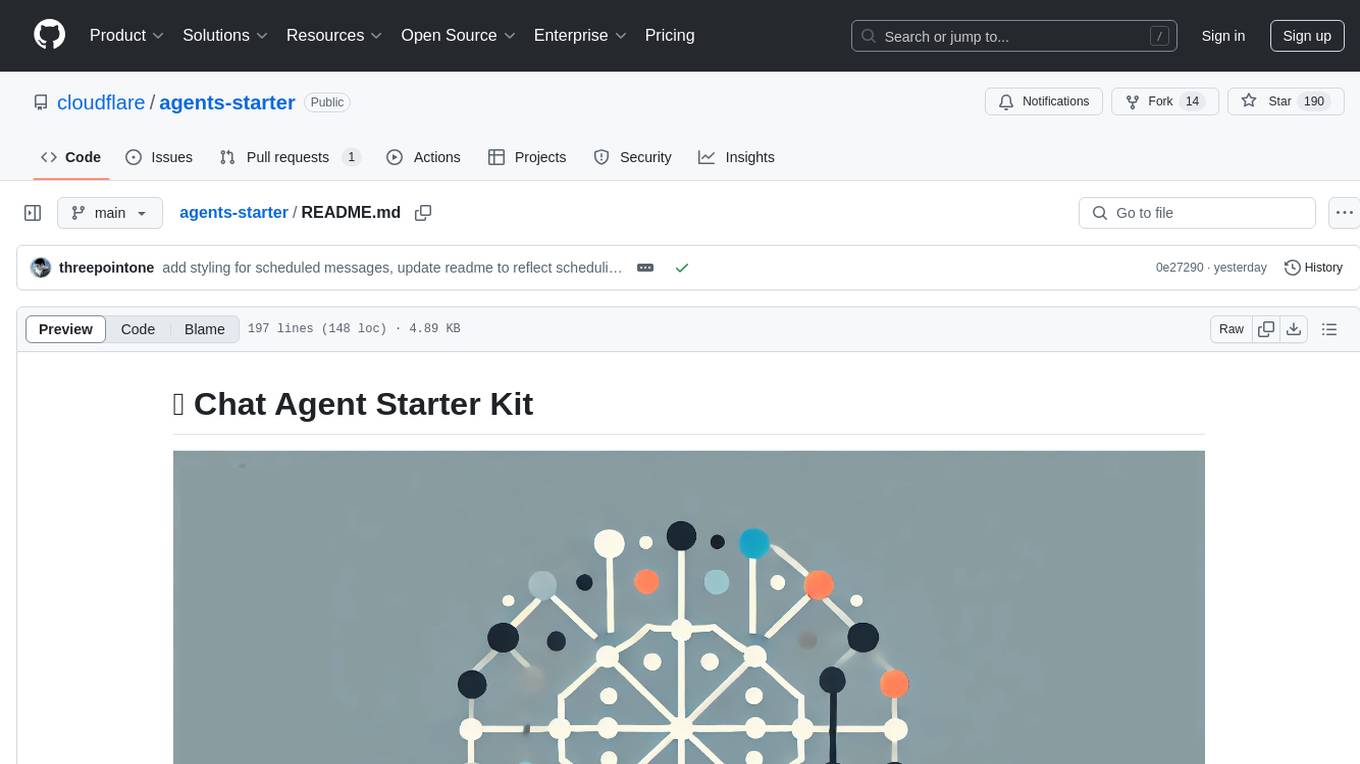
agents-starter
A starter template for building AI-powered chat agents using Cloudflare's Agent platform, powered by agents-sdk. It provides a foundation for creating interactive chat experiences with AI, complete with a modern UI and tool integration capabilities. Features include interactive chat interface with AI, built-in tool system with human-in-the-loop confirmation, advanced task scheduling, dark/light theme support, real-time streaming responses, state management, and chat history. Prerequisites include a Cloudflare account and OpenAI API key. The project structure includes components for chat UI implementation, chat agent logic, tool definitions, and helper functions. Customization guide covers adding new tools, modifying the UI, and example use cases for customer support, development assistant, data analysis assistant, personal productivity assistant, and scheduling assistant.
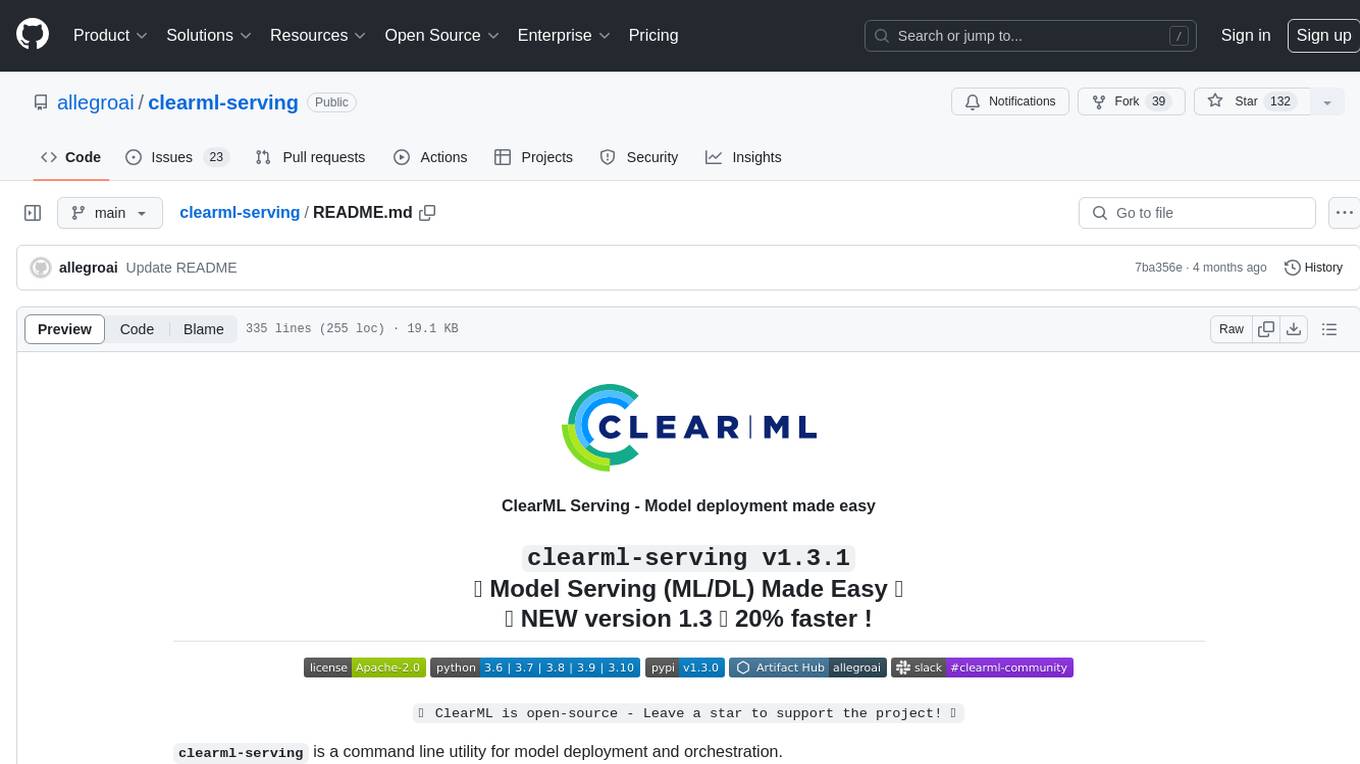
clearml-serving
ClearML Serving is a command line utility for model deployment and orchestration, enabling model deployment including serving and preprocessing code to a Kubernetes cluster or custom container based solution. It supports machine learning models like Scikit Learn, XGBoost, LightGBM, and deep learning models like TensorFlow, PyTorch, ONNX. It provides a customizable RestAPI for serving, online model deployment, scalable solutions, multi-model per container, automatic deployment, canary A/B deployment, model monitoring, usage metric reporting, metric dashboard, and model performance metrics. ClearML Serving is modular, scalable, flexible, customizable, and open source.
For similar tasks
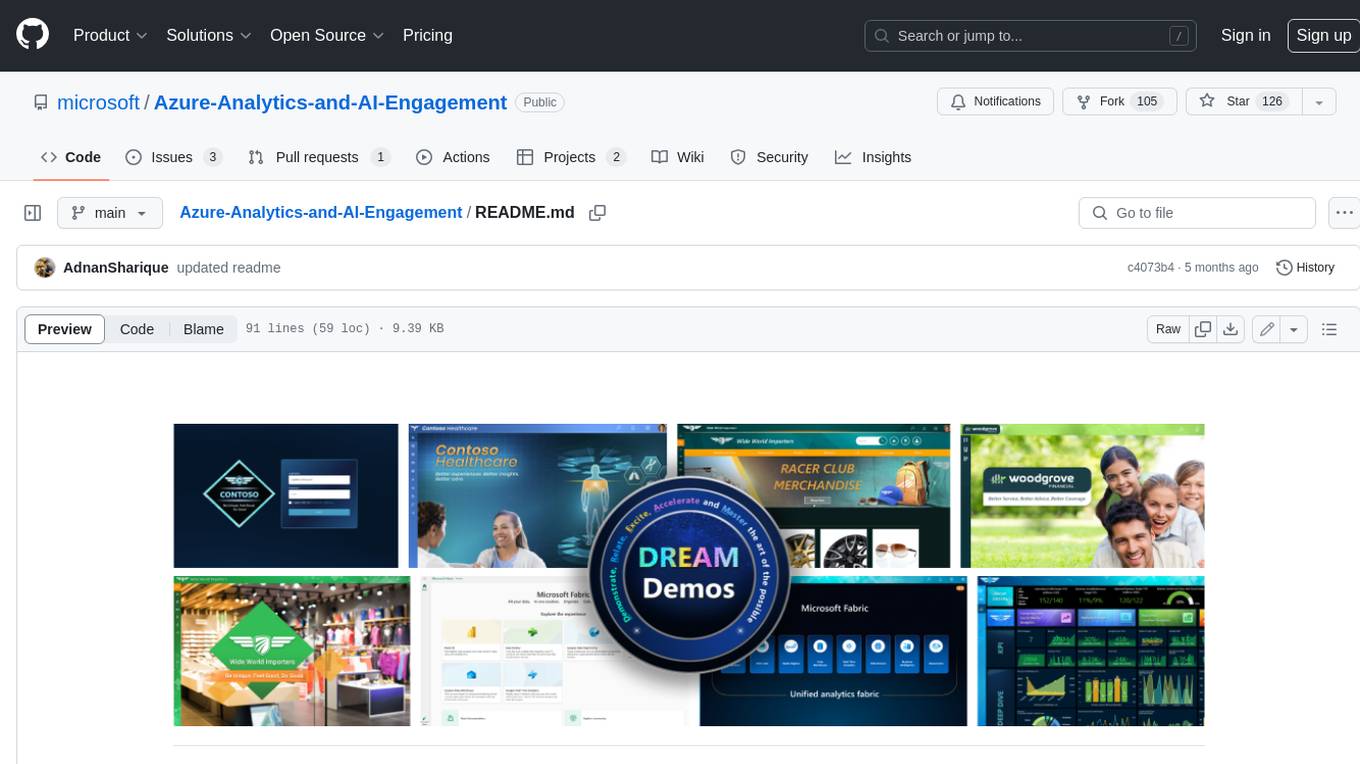
Azure-Analytics-and-AI-Engagement
The Azure-Analytics-and-AI-Engagement repository provides packaged Industry Scenario DREAM Demos with ARM templates (Containing a demo web application, Power BI reports, Synapse resources, AML Notebooks etc.) that can be deployed in a customer’s subscription using the CAPE tool within a matter of few hours. Partners can also deploy DREAM Demos in their own subscriptions using DPoC.
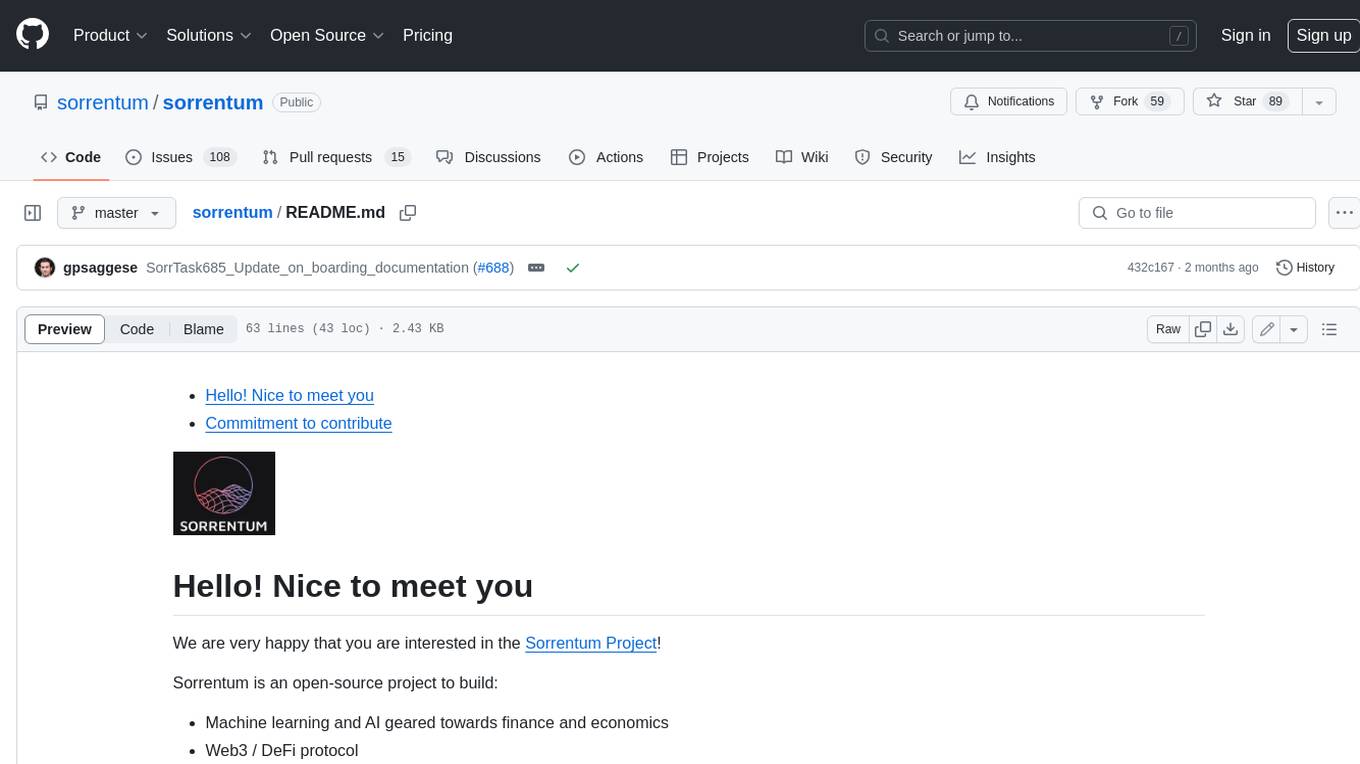
sorrentum
Sorrentum is an open-source project that aims to combine open-source development, startups, and brilliant students to build machine learning, AI, and Web3 / DeFi protocols geared towards finance and economics. The project provides opportunities for internships, research assistantships, and development grants, as well as the chance to work on cutting-edge problems, learn about startups, write academic papers, and get internships and full-time positions at companies working on Sorrentum applications.
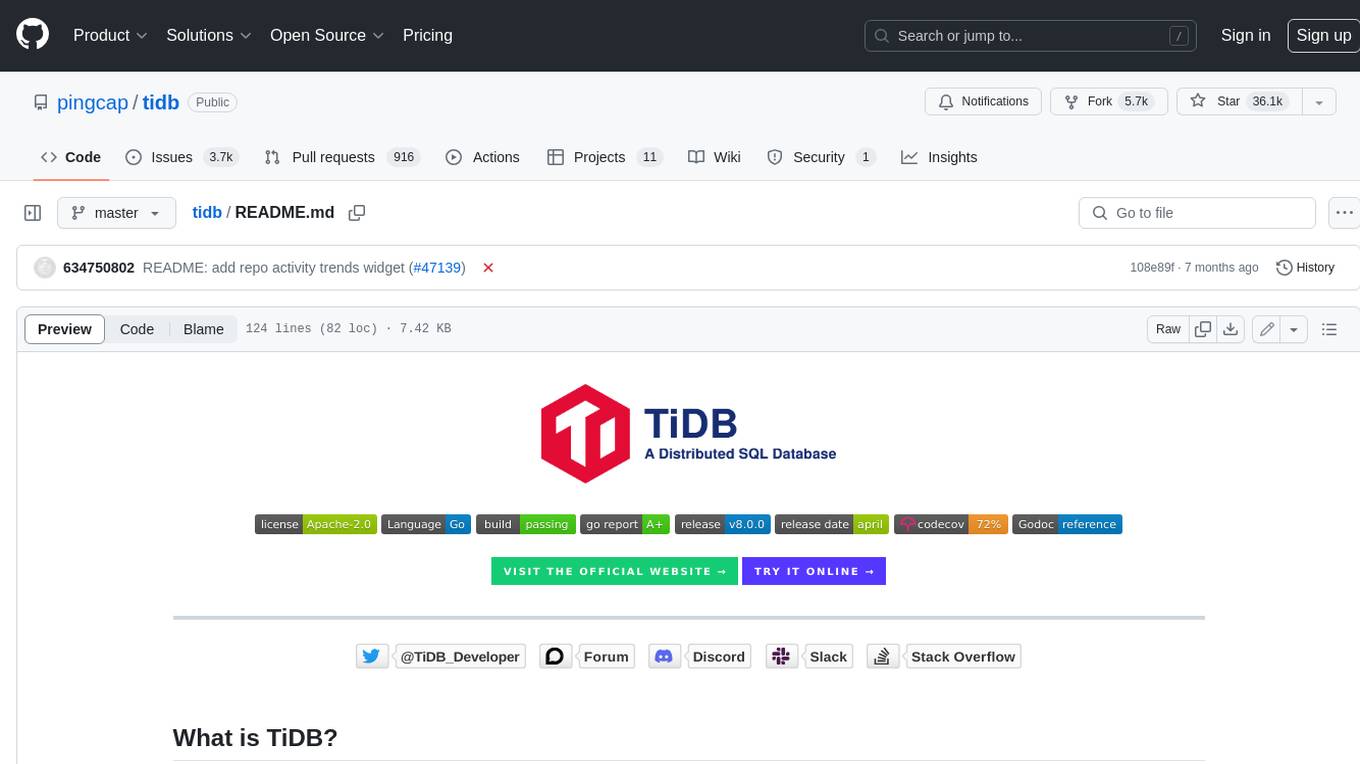
tidb
TiDB is an open-source distributed SQL database that supports Hybrid Transactional and Analytical Processing (HTAP) workloads. It is MySQL compatible and features horizontal scalability, strong consistency, and high availability.

zep-python
Zep is an open-source platform for building and deploying large language model (LLM) applications. It provides a suite of tools and services that make it easy to integrate LLMs into your applications, including chat history memory, embedding, vector search, and data enrichment. Zep is designed to be scalable, reliable, and easy to use, making it a great choice for developers who want to build LLM-powered applications quickly and easily.
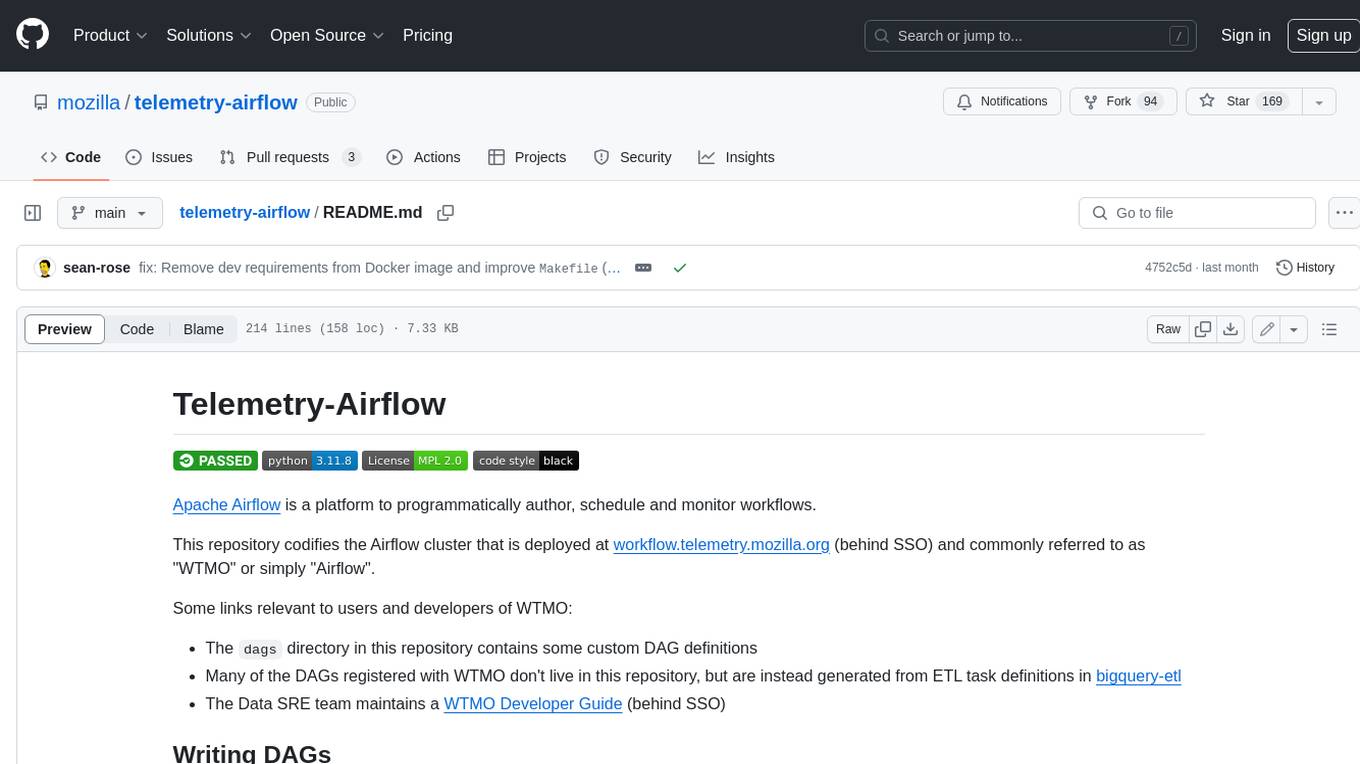
telemetry-airflow
This repository codifies the Airflow cluster that is deployed at workflow.telemetry.mozilla.org (behind SSO) and commonly referred to as "WTMO" or simply "Airflow". Some links relevant to users and developers of WTMO: * The `dags` directory in this repository contains some custom DAG definitions * Many of the DAGs registered with WTMO don't live in this repository, but are instead generated from ETL task definitions in bigquery-etl * The Data SRE team maintains a WTMO Developer Guide (behind SSO)
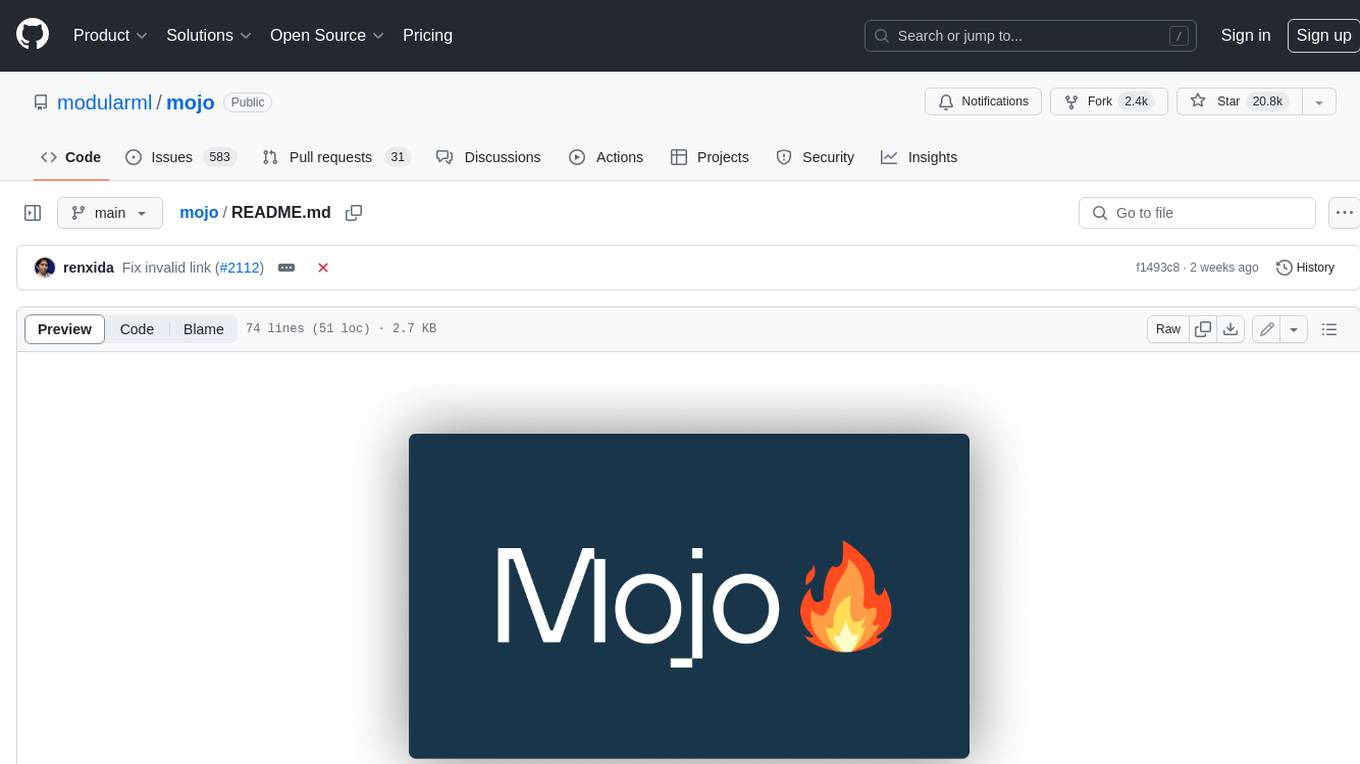
mojo
Mojo is a new programming language that bridges the gap between research and production by combining Python syntax and ecosystem with systems programming and metaprogramming features. Mojo is still young, but it is designed to become a superset of Python over time.
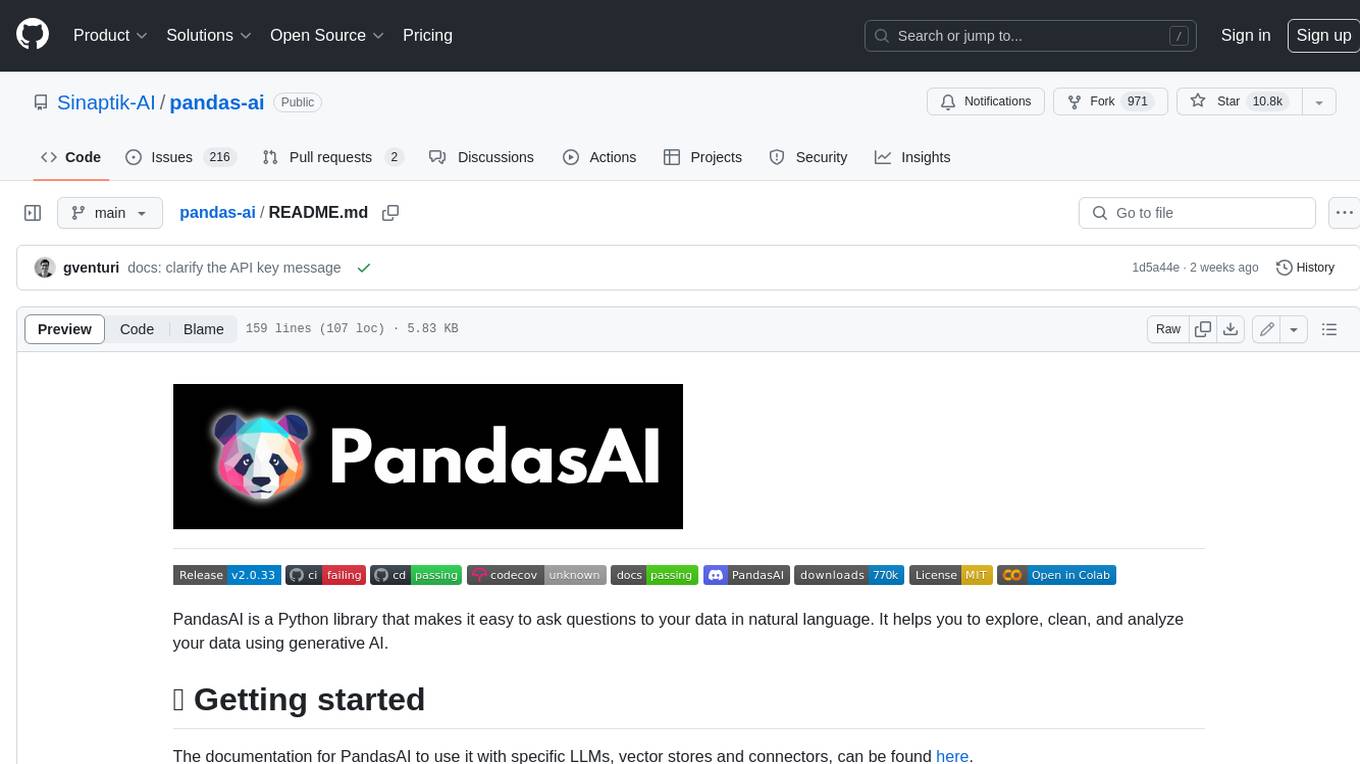
pandas-ai
PandasAI is a Python library that makes it easy to ask questions to your data in natural language. It helps you to explore, clean, and analyze your data using generative AI.
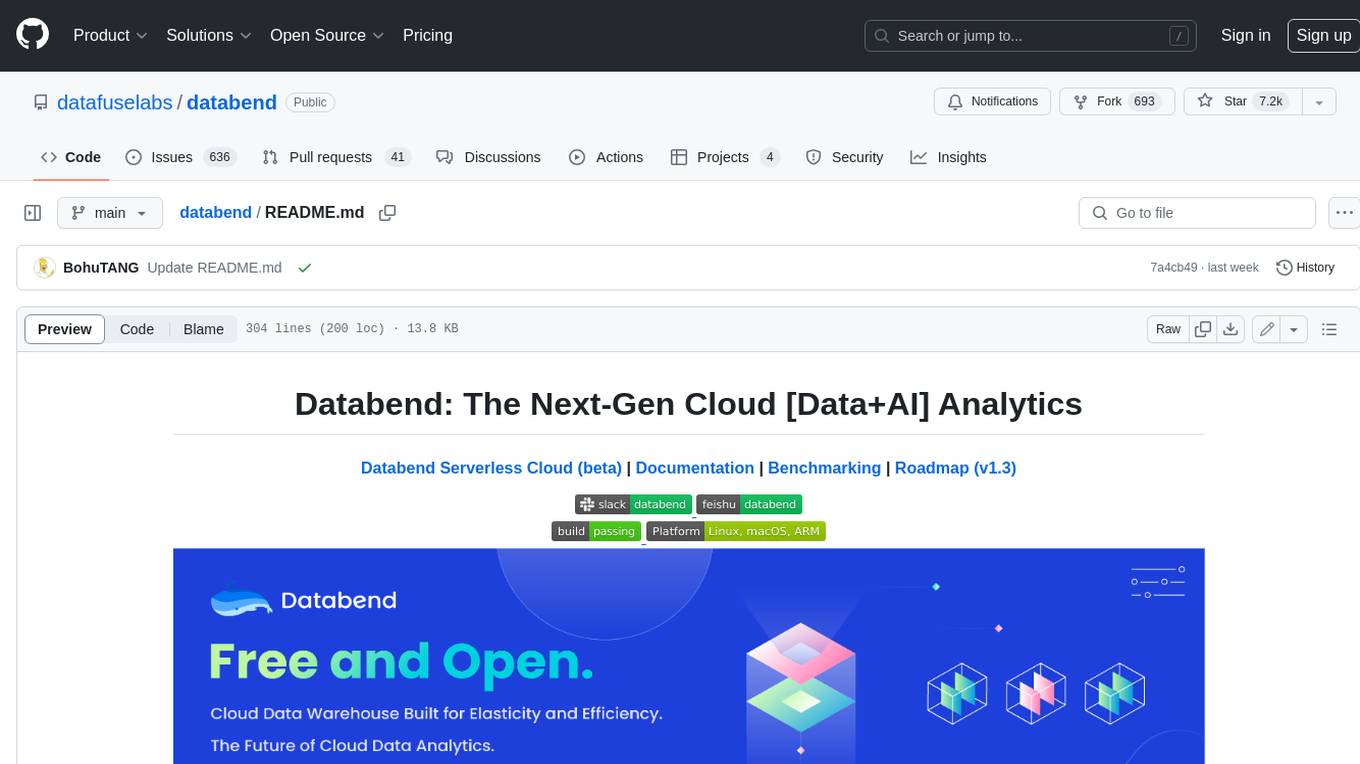
databend
Databend is an open-source cloud data warehouse that serves as a cost-effective alternative to Snowflake. With its focus on fast query execution and data ingestion, it's designed for complex analysis of the world's largest datasets.
For similar jobs

sweep
Sweep is an AI junior developer that turns bugs and feature requests into code changes. It automatically handles developer experience improvements like adding type hints and improving test coverage.

teams-ai
The Teams AI Library is a software development kit (SDK) that helps developers create bots that can interact with Teams and Microsoft 365 applications. It is built on top of the Bot Framework SDK and simplifies the process of developing bots that interact with Teams' artificial intelligence capabilities. The SDK is available for JavaScript/TypeScript, .NET, and Python.

ai-guide
This guide is dedicated to Large Language Models (LLMs) that you can run on your home computer. It assumes your PC is a lower-end, non-gaming setup.

classifai
Supercharge WordPress Content Workflows and Engagement with Artificial Intelligence. Tap into leading cloud-based services like OpenAI, Microsoft Azure AI, Google Gemini and IBM Watson to augment your WordPress-powered websites. Publish content faster while improving SEO performance and increasing audience engagement. ClassifAI integrates Artificial Intelligence and Machine Learning technologies to lighten your workload and eliminate tedious tasks, giving you more time to create original content that matters.

chatbot-ui
Chatbot UI is an open-source AI chat app that allows users to create and deploy their own AI chatbots. It is easy to use and can be customized to fit any need. Chatbot UI is perfect for businesses, developers, and anyone who wants to create a chatbot.

BricksLLM
BricksLLM is a cloud native AI gateway written in Go. Currently, it provides native support for OpenAI, Anthropic, Azure OpenAI and vLLM. BricksLLM aims to provide enterprise level infrastructure that can power any LLM production use cases. Here are some use cases for BricksLLM: * Set LLM usage limits for users on different pricing tiers * Track LLM usage on a per user and per organization basis * Block or redact requests containing PIIs * Improve LLM reliability with failovers, retries and caching * Distribute API keys with rate limits and cost limits for internal development/production use cases * Distribute API keys with rate limits and cost limits for students

uAgents
uAgents is a Python library developed by Fetch.ai that allows for the creation of autonomous AI agents. These agents can perform various tasks on a schedule or take action on various events. uAgents are easy to create and manage, and they are connected to a fast-growing network of other uAgents. They are also secure, with cryptographically secured messages and wallets.

griptape
Griptape is a modular Python framework for building AI-powered applications that securely connect to your enterprise data and APIs. It offers developers the ability to maintain control and flexibility at every step. Griptape's core components include Structures (Agents, Pipelines, and Workflows), Tasks, Tools, Memory (Conversation Memory, Task Memory, and Meta Memory), Drivers (Prompt and Embedding Drivers, Vector Store Drivers, Image Generation Drivers, Image Query Drivers, SQL Drivers, Web Scraper Drivers, and Conversation Memory Drivers), Engines (Query Engines, Extraction Engines, Summary Engines, Image Generation Engines, and Image Query Engines), and additional components (Rulesets, Loaders, Artifacts, Chunkers, and Tokenizers). Griptape enables developers to create AI-powered applications with ease and efficiency.







